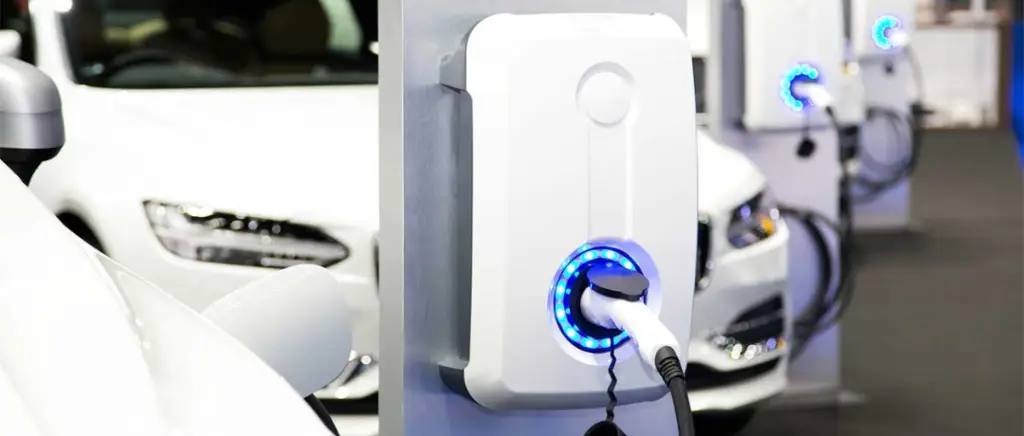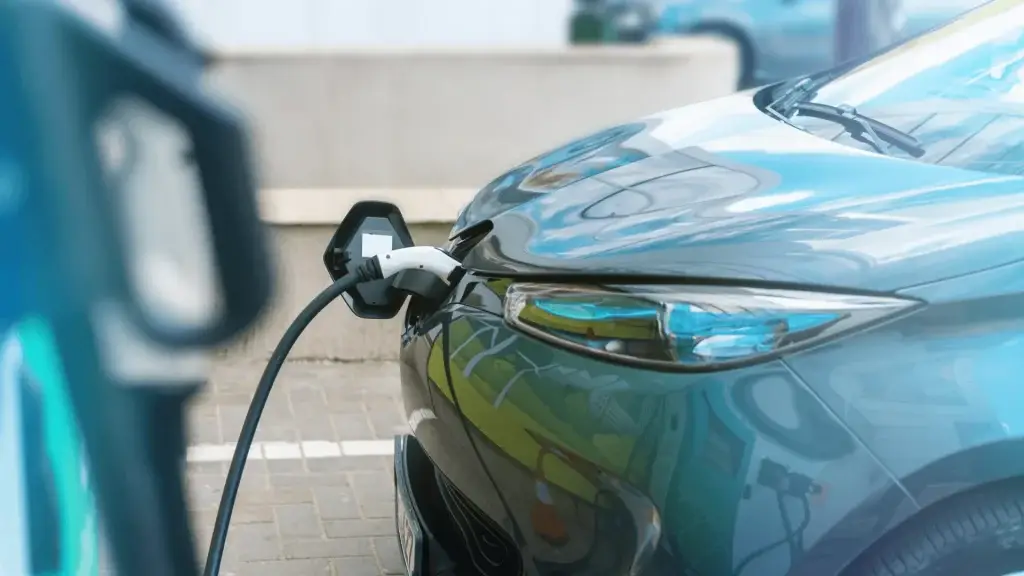Home > Electrify your fleet with Beev > How do you convince your management to switch to a 100 % electric fleet?
How do you convince your management to switch to a 100 % electric fleet?
Adopt a vehicle fleet Electricity is now a major strategic challenge for companies seeking to optimise their return on investment while anticipating regulatory and societal changes. Faced with the growing importance of electric vehicles and changing expectations in terms of social and environmental responsibility, managers now need to factor the tangible benefits of an electric fleet into their thinking. However, the transition to electric mobility is not without its challenges: analysis of the total cost of ownership (TCO)adaptation ofrecharging infrastructureThese are all company-specific issues that require a rigorous approach and tailor-made solutions. In this article, we offer you a clear, costed method for convincing your management to switch to an electric 100% fleet, highlighting the savings that can be made, the financial support available, the positive impact on brand image and competitiveness, and the practical steps you need to take to successfully transform your fleet.
Table of contents
What are the advantages of an electric fleet for businesses?
Adopting a fleet of 100% electric vehicles is much more than just a commitment to the environment: it's a major strategic lever for optimising your company's return on investment. Before convincing your management, it is essential to highlight the tangible benefits of this transition. The benefits of an electric fleet are not limited to reducing CO₂ emissions: they have a direct impact on your company's financial performance, brand appeal and overall competitiveness.
Here are the main benefits for the company:
- Access to grants and tax incentivesElectromobility: Subsidies, environmental bonuses, tax exemptions... electromobility opens the door to a host of support schemes that significantly reduce the cost of acquiring and running each vehicle.
- Lower operating costsAn electric fleet means significant savings on fuel, servicing and maintenance, thanks to simpler, more energy-efficient engines.
- Improving brand image and CSROpting for electric vehicles enhances the company's sustainable development approach, reinforces its social responsibility and offers a tangible competitive advantage with customers, partners and talent.
Putting forward these arguments helps not only to justify the initial investment, but also to demonstrate the profitability and relevance of an electric 100% fleet over the long term.
Access to grants and tax incentives
By opting for an electric 100% fleet, companies can benefit from a host of grants and tax incentives that considerably reduce the overall cost of the project, over and above the environmental gains alone.
Here are the main schemes to highlight to your management:
- Total exemption from Company Vehicle Tax (TVS) Electric vehicles are fully exempt from VAT, a substantial saving that can amount to several thousand euros a year for a medium-sized or large fleet. This exemption applies to both the annual tax on CO2 emissions and that on atmospheric pollutants.
- Exemption from or reduction in vehicle registration tax 100% electric vehicles: Depending on the region, the vehicle registration document for electric 100% vehicles remains free or largely exempt, which reduces the cost of acquisition.
- VAT reduced to 5.5% on recharging infrastructure installations This preferential rate applies to the installation of charging points in company car parks, optimising the initial investment in the energy transition.
- Direct purchase aid for certain vehicles In 2025, the government is offering up to €4,450 for the purchase of a new electric light commercial vehicle, and Energy Savings Certificates (EEC) of up to €53,000 for a new electric HGV.
- Local subsidies : Some regions continue to offer grants covering up to 50% of the cost of deploying charging points, in addition to national tax breaks.
- Phasing out subsidies for hybrid vehicles In addition, taxation will become much less advantageous for hybrids from 2025. Strengthening the "full electric" dimension therefore maximises the financial impact of the strategy to make the fleet greener.
Highlighting these financial and tax arguments in your dossier is a relevant way of convincing management, by demonstrating that the transition to electric vehicles, in addition to its ecological advantages, is also part of a strategy of profitability and optimisation of the fleet's overall budget.
Lower operating costs
Switching to an electric 100% fleet will enable the company to make significant savings on its operating costs, a key argument to present to its management. Overall, the various expenditure items are lower than for a combustion-powered fleet, which improves profitability in the medium and long term.
- Lower energy costs: Charging an electric vehicle is much cheaper than filling up with fuel. To cover 100km, an electric vehicle requires around 15kWh of electricity, or an average of €3, compared with €8 to €12 for an equivalent petrol or diesel model.
- Reduced maintenance: Electric vehicles have fewer wearing parts (no oil changes, timing belts, clutches), which means significantly lower maintenance and repair costs.
Some studies estimate these savings at more than 30% over the long term. - Tax advantages: Electric cars benefit from more favourable tax treatment: exemption or reduction of certain taxes, full or partial recovery of VAT on electricity, reduced benefits in kind for employees using these vehicles.
- Lower total cost of ownership (TCO): The TCO of an electric vehicle is often lower than that of a combustion vehicle, thanks to the energy/maintenance/tax trio. According to a recent comparison, the annual running cost of an electric vehicle can be halved compared with a combustion vehicle in some cases.
Convincing management means highlighting these quantifiable benefits, emphasising the structural and sustainable reduction in costs, and the direct impact on cash flow and the company's overall competitiveness.
Improving brand image and CSR
Adopting an electric 100% fleet represents a powerful lever for strengthening the company's brand image and enhancing its Corporate Social Responsibility (CSR) policy. This strategic choice immediately projects the company as a modern, committed organisation that cares about its environmental impact.
Here's how electric mobility is helping to improve brand image and CSR:
- Measurable reduction in carbon footprint The electrification of the fleet will significantly reduce CO2 emissions and atmospheric pollutants. This practical approach demonstrates a commitment to the environment that is in line with the expectations of customers, partners and employees, and fosters greater public acceptance of the company.
- Enhancing reputation and commercial appeal Displaying a green fleet enhances a company's ethical credentials and strengthens its credibility with B2B customers and partners, who are increasingly sensitive to sustainable practices. This responsible approach can become a differentiating argument in calls for tender or commercial negotiations.
- Making an active contribution to air quality and public health By reducing polluting emissions, the company plays a tangible role in improving the quality of life in its local area, which in turn has a positive impact on public relations and local involvement.
- Promoting CSR actions to stakeholders Going electric fits perfectly into an ambitious CSR strategy as a visible and quantifiable action that can be promoted in annual reports, internal communications and employer branding campaigns.
Committing to electric mobility means adopting an image that is innovative, responsible and resolutely forward-looking, while meeting the challenges of sustainable development, which are becoming crucial criteria in the choice of commercial partners and the retention of talent.
How do you calculate the return on investment for an electric fleet?
Switching a vehicle fleet to 100% electric represents a major strategic investment for a company. Before convincing management, it is essential to accurately assess the return on investment (ROI) of this transition. Analysis of the total cost of ownership (TCO) is a key indicator, combining all the costs associated with the acquisition, use and maintenance of electric vehicles. This comprehensive calculation not only makes it possible to compare costs with those of combustion-powered vehicles, but also to identify potential savings over the long term.
The key components of TCO include :
- The purchase price and financial or tax incentives (ecological bonus, tax exemptions, etc.)
- Energy costs, which are often significantly lower for electricity than for conventional fuel
- Maintenance and repair costs, which are generally lower with electric vehicles
- The management of recharging infrastructures and their associated costs
This rigorous, costed approach is essential to demonstrate the profitability and economic relevance of an electric fleet to management, while at the same time being part of a sustainable strategy that complies with regulatory changes.
Analysis of total cost of ownership (TCO)
To effectively analyse the total cost of ownership (TCO) of an electric 100% fleet and convince management, it is essential to consider all the financial elements over the lifetime of the vehicles. TCO covers much more than just the purchase price, and includes several key components that are essential for assessing the return on investment. Here are the main points to include in this analysis:
- Acquisition costs Costs: These include the purchase price of the vehicles, ancillary costs such as registration, and financial assistance and tax incentives (ecological bonuses, conversion bonuses, various exemptions) that can significantly reduce the initial investment.
- Cost of use Costs: These mainly include energy (electricity vs. conventional fuel), where the electric vehicle offers a significant advantage thanks to a recharging cost that is often lower than the price of fossil fuel. This item also includes actual energy consumption according to use and optimised management of recharging.
- Care and maintenance : Electric vehicles have lower maintenance costs thanks to a simplified mechanical architecture - fewer moving parts, no oil changes, regenerative braking that limits wear and tear - which lowers costs over time, to be compared carefully with those of combustion-powered fleets.
- Insurance and taxes Insurance: While insurance costs may be a little higher, exemptions or reductions in certain taxes (company car tax, ecological malus, etc.) help to reduce the overall TCO.
- Residual value Although the depreciation of electric vehicles needs to be monitored, advances in battery life and growing demand can optimise resale value, having a positive impact on the balance sheet.
- Infrastructure costs The installation of charging points and the management of charging within the company should be seen as an investment that can often be amortised, but which is necessary to maximise the efficiency of the fleet.
- Operational optimisation Intelligent route management, eco-driving training and the use of telematics tools can further reduce TCO by maximising range and reducing energy consumption.
The TCO approach thus reveals the real savings made in the medium and long term with an electric fleet. This global vision is the key argument for convincing your management: the transition to an electric 100% fleet is not only beneficial for the environment, it is also financially profitable, generating substantial savings over the entire life cycle of the vehicles, while controlling the costs and risks associated with the fleet.
Manage your fleet easily with our dedicated tool

A fleet management tool from A to Z
- Add your fleet and employees in just a few clicks
- Plan your transition to electric vehicles and monitor your CSR objectives in real time
- Centralise your expenses

What arguments should you put to your management to justify an electric fleet?
Switching to an electric 100% fleet is not a decision to be taken lightly. To convince management, it's essential to back up your proposal with solid, factual arguments. This approach is structured around two key points:
- Figures and case studies The aim is to use precise figures to show the rapid development of electric fleets within companies, their economic performance, the reduction in operating costs and successful examples to illustrate the tangible benefits of this transition.
- Alignment with the company's CSR strategy The aim is to highlight the growing importance of corporate social responsibility, where the adoption of electric vehicles is a powerful lever for reducing carbon footprints, improving brand image and meeting the expectations of stakeholders (customers, employees, authorities).
These arguments, combined with a detailed analysis of the issues specific to the organisation, help to build a convincing case to management, combining economic performance and sustainable commitment.
Figures and case studies
To effectively convince your management to switch to an electric 100% fleet, it's essential to provide figures and concrete examples. This will demonstrate the economic and environmental viability of the project, while meeting current regulatory and strategic challenges.
- Market trends and share of electricity In France, at the end of 2024, more than 1.3 million 100% electric vehicles were on the road, representing around 2 to 3% of the total fleet. Including plug-in hybrids, this figure exceeds 2 million, confirming the rapid and growing adoption of these technologies.
- Sales and growth in registrations Despite a slight fall in sales in 2025 (-6% in the first half, due to contextual effects such as the exceptional social leasing in 2024), the share of electric vehicles in new registrations is rising, reaching almost 18% in 2025. This dynamic trend illustrates a market that is making a lasting contribution to the energy transition.
- Concrete cases of adoption Popular models such as the Renault 5 and Citroën ë-C3 are enjoying massive sales figures (over 15,000 units for the Renault 5 in six months in 2025), demonstrating the maturity and diversity of the electric range available to business fleets.
- Proven economic benefits Electric fleets benefit from reduced maintenance costs, lower energy consumption and existing subsidies and tax incentives. These figures, combined with positive feedback from companies that have already electrified their fleets, are pragmatic and convincing arguments for management.
- Regulatory compliance and anticipating standards French law now imposes progressive quotas for low-emission vehicles in fleets, a constraint that must be respected to avoid penalties and loss of image. Adopting an electric fleet ahead of time is also a way of aligning with sustainable development and corporate social responsibility (CSR) objectives.
In short, these current, concrete figures help to demonstrate that the switch to electric 100% is no longer a futuristic option, but a viable, profitable and essential strategy for today's businesses.
Alignment with the company's CSR strategy
Integrating an electric 100% fleet represents a major lever for strengthening your organisation's CSR (Corporate Social Responsibility) strategy. Convincing your management means highlighting this essential strategic alignment, which is based on several key pillars:
- Significant reduction in carbon footprint Electric vehicles emit around 50% less CO2 over their lifecycle than combustion engine vehicles. This reduction contributes directly to the carbon neutrality objectives set out in modern CSR policies, particularly in a context where transport accounts for almost 30% of national greenhouse gas emissions.
- Contributing to the energy transition By adopting an electric fleet, the company is promoting the use of renewable energies and supporting the sustainability of its operations. This demonstrates a concrete commitment to sustainable mobility, a priority that is increasingly expected by internal and external stakeholders.
- Promoting an eco-responsible brand image The use of electric vehicles improves the company's image with customers, partners and employees. This approach strengthens CSR credibility, attracts talent that is sensitive to these issues, and can provide a competitive advantage that sets the company apart.
- Cost optimisation and environmental performance : Managing an electric fleet also means energy savings and better control of mobility-related expenditure, in addition to the environmental benefits. This dual performance is a strong argument for management looking for economic efficiency coupled with a positive impact.
- Compliance with regulatory requirements and anticipation of future standards More and more environmental regulations are being imposed on emissions from company fleets. By switching to an electric fleet now, companies can anticipate these changes, limit the risks associated with compliance and secure their long-term strategy.
In short, to convince your management, it's crucial to present the electric fleet not just as a technological investment, but as a major strategic lever forming part of the company's overall CSR policy, providing measurable environmental benefits, enhanced image and sustainable economic performance.
See also our article :
What are the key stages in making a successful transition to an electric fleet using Beev Fleet Manager?
To successfully make the transition to an electric 100% fleet, the Fleet Manager Beev's structured and simplified approach is based on a number of key stages that are essential for convincing and effectively managing this strategic change.
Here are the main steps for making a successful transition using this tool:
- Carrying out a complete audit of TCO and CO₂ emissions :
Fleet Manager automatically imports data from your current fleet and calculates the precise Total Cost of Ownership (TCO) and carbon impact. This analysis provides a clear, quantified picture, which is essential for raising management awareness of economic and environmental issues. - Simplified viewing and monitoring of the entire fleet at the click of a button :
By centralising all the key information - leasing contracts, mileage, costs, emissions, vehicle allocation - on a single intuitive dashboard, Fleet Manager facilitates rapid, informed decision-making. This synchronisation avoids errors and wasted time associated with manual management. - All-in-one fleet management and optimisation, scalable and adaptable :
With Beev Fleet Manager, management is not limited to vehicles: the tool also takes charge of supervising charging points (a function that will soon be available). This overall control helps to plan the progressive deployment of the necessary infrastructure and guarantee energy performance. - Transition planning tailored to each company profile :
Whether you're a VSE, SME or large corporation, Fleet Manager adapts to your specific needs in terms of vehicle tracking, employee management and CSR reporting. This modularity means you can tailor your management to meet your strategic and regulatory objectives. - Change management via alerts and dedicated support :
The tool provides alerts for monitoring contracts and maintenance, preventing costly oversights. Expert support ensures that fleet managers are rapidly brought up to speed, maximising the benefits of the electric transition. - Anticipating savings and regulatory constraints :
Thanks to real-time monitoring of financial and environmental indicators, you can anticipate sustainable savings while complying with carbon footprint reduction policies and new mobility standards.
With the support of Beev Fleet Manager, the transition to an electric fleet becomes a controlled and optimised process, combining a precise audit, centralised management and tailored support to effectively convince your management.
Summary table of the benefits of an electric fleet for businesses
| Theme | Key points to remember |
|---|---|
| Advantages of an electric fleet | CO₂ reduction, improved image, savings on fuel and maintenance, tax breaks. |
| Aid and tax incentives | Exemptions (VAT, vehicle registration), reduced VAT, purchase subsidies of up to €53,000, priority for the 100% electric. |
| Lower operating costs | Cheaper energy, reduced maintenance, tax benefits, lower TCO up to 50%. |
| Impact on image and CSR | Improved brand image, increased attractiveness, CSR enhancement, competitive advantage. |
| Return on investment (ROI) | Full TCO including all costs, proven profitability, operational optimisation. |
| Arguments for management | Figures, market growth, strategic and regulatory alignment. |
| Key stages in the transition | TCO audit, fleet visualisation, refuelling optimisation, expert support. |
Conclusion
In conclusion, Convincing management to switch to an electric 100% fleet is based on a clear, quantified demonstration of the strategic, economic and environmental benefits of the switch. This involves highlighting the substantial savings made through reduced energy and maintenance costs, as well as the significant financial aid and tax incentives. This transformation also improves the company's brand image and strengthens its commitment to corporate social responsibility (CSR), while anticipating regulatory changes.
Adopting a rigorous approach based on analysis of the total cost of ownership (TCO) and relying on tools such as a Fleet Manager guarantees efficient management and a controlled transition, making electric mobility a profitable, ecological and sustainable lever for the company.
Resources on the taxation of electric mobility

- Charging stations, Fleet management, Electric cars

- Fleet management, magazine, Professionals, CSR, Electric vans, Electric cars

- Taxation of electric cars and charging stations, Fleet management, Electric cars

- Charging stations, Fleet management, Professionals

- Fleet management, Professionals

- Fleet management, magazine, Electric cars
Do you have a question about fleet electrification?
Why electrify a company fleet in 2025?
Electrification makes it possible to reduce running costs (recharging, maintenance), meet regulatory requirements (LOM law, ZFE) and improve the company's CSR image. Electric vehicles also offer greater comfort for drivers.
What are the current legal obligations?
Since 1 January 2025, companies with more than 50 employees and a fleet of more than 100 vehicles must include at least 20 % of low-emission vehicles in their annual renewals. This quota will rise to 40 % in 2027 and 70 % in 2030. There are financial penalties for non-compliance.
What financial assistance is available?
Companies can benefit from subsidies such as ADEME's "Tremplin pour la transition écologique" scheme, which finances studies, diagnostics and investment in sustainable mobility.
How is Beev supporting the electric transition?
Beev offers a personalised audit of your fleet, identifies vehicle and charging infrastructure requirements, and provides a free platform to manage your electric fleet, track costs in real time and monitor CO₂ emissions.
What are the economic advantages of an electric fleet?
Electric vehicles cost around four times less to recharge than internal combustion vehicles, and require less maintenance. What's more, they save money thanks to the financial assistance available.
How do you manage an electric fleet effectively?
We recommend using management tools such as the Beev platform, which allows you to view key vehicle data, monitor the status of charging points and optimise the fleet's energy performance.
